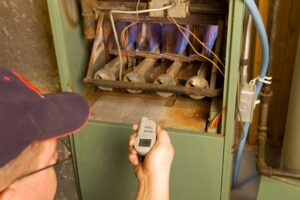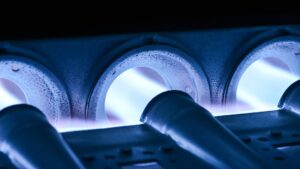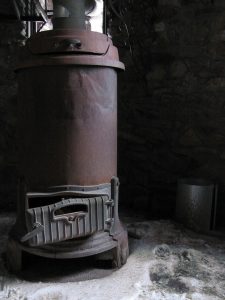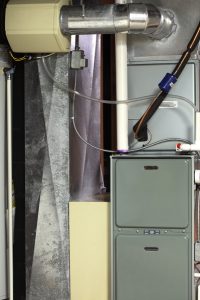 Most of our customers know one big detail about carbon monoxide–that it’s poisonous. As long as you know that carbon monoxide is bad and should never be allowed to exist in your home, then you’re probably fine to continue with life as usual. However, for our more curious customers that want a bit more information as to why carbon monoxide is poisonous, then you’re in the right place.
Most of our customers know one big detail about carbon monoxide–that it’s poisonous. As long as you know that carbon monoxide is bad and should never be allowed to exist in your home, then you’re probably fine to continue with life as usual. However, for our more curious customers that want a bit more information as to why carbon monoxide is poisonous, then you’re in the right place.
This info isn’t meant to scare anyone or cause people to panic. Carbon monoxide coming from a furnace can only really happen in specific circumstances, and our team helps homeowners avoid those circumstances at all costs. This blog post is only meant to inform you and help you parse facts from fiction.
So, let’s talk about the chemical makeup of carbon monoxide, why it might come from your heater, and how our team’s heater repair in Bulverde, TX can keep your home safe.

 How big is your heater? No, hold on—don’t just go measure it and report back to us how many square feet it takes up. While that definitely matters in the measurement of your heater, it’s not the whole story. Heaters need to be able to adequately heat an entire home, and that means a specific model should have been installed in your home that’s able to heat the volume of air inside. This measurement of volume before setting a heater up is known as load calculation.
How big is your heater? No, hold on—don’t just go measure it and report back to us how many square feet it takes up. While that definitely matters in the measurement of your heater, it’s not the whole story. Heaters need to be able to adequately heat an entire home, and that means a specific model should have been installed in your home that’s able to heat the volume of air inside. This measurement of volume before setting a heater up is known as load calculation. It’s that time of year again. Air conditioning season has come to a close and it’s time for heating season. But what exactly does that mean for you?
It’s that time of year again. Air conditioning season has come to a close and it’s time for heating season. But what exactly does that mean for you? We can all admit it: winter here doesn’t exactly require a heavy coat and a pair of mittens. However, the temperature can dip well into the 60s, and for many of us, that is just too cold. During the winter, we turn to our heaters to keep us warm and comfortable. But, what happens if you find yourself dealing with a handful of heater issues? For many homeowners, the decision to replace or repair their older heating system can be quite a difficult one to make. So, what do you do?
We can all admit it: winter here doesn’t exactly require a heavy coat and a pair of mittens. However, the temperature can dip well into the 60s, and for many of us, that is just too cold. During the winter, we turn to our heaters to keep us warm and comfortable. But, what happens if you find yourself dealing with a handful of heater issues? For many homeowners, the decision to replace or repair their older heating system can be quite a difficult one to make. So, what do you do? If you are poking around heating blogs this time of year, you are probably going to encounter quite a few posts telling you what to look out for in terms of red flags that your system is in trouble. There is a lot of good information to be gleaned from such posts. Just remember, though, that it’s not all about looking for signs of trouble. Listen for signs that you need
If you are poking around heating blogs this time of year, you are probably going to encounter quite a few posts telling you what to look out for in terms of red flags that your system is in trouble. There is a lot of good information to be gleaned from such posts. Just remember, though, that it’s not all about looking for signs of trouble. Listen for signs that you need  We’re just barely out of the hottest time of the year, and these people want us to start thinking not only about our heaters, but what might go wrong with them? Give us a break, will you?
We’re just barely out of the hottest time of the year, and these people want us to start thinking not only about our heaters, but what might go wrong with them? Give us a break, will you?













